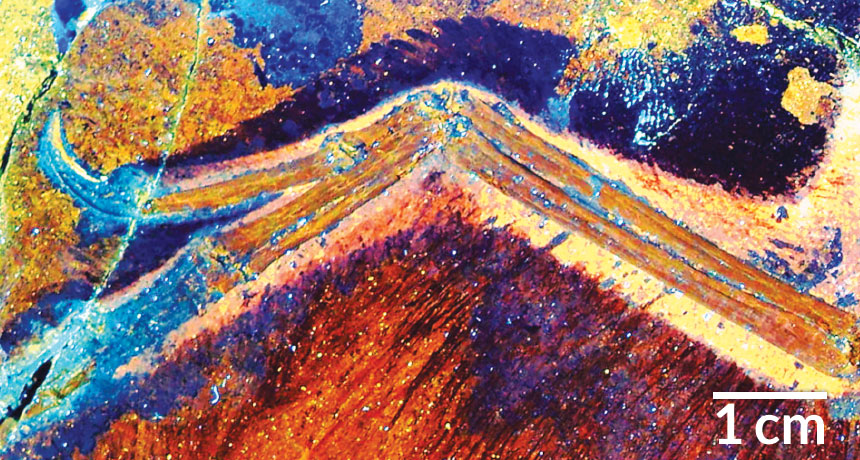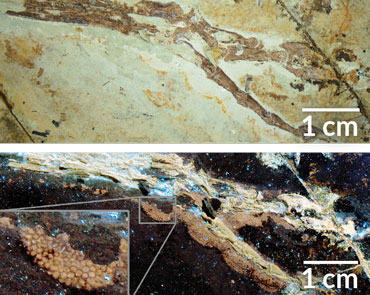Under lasers, a feathered dino shows some skin
Geochemical fluorescence method illuminates Anchiornis soft tissue, but some remain skeptical

LASER LIGHTING A next-generation imaging technique called laser-stimulated fluorescence reveals hidden skin in the feathered wing of the Jurassic dinosaur Anchiornis.
X.L. Wang, M. Pittman et al 2017









